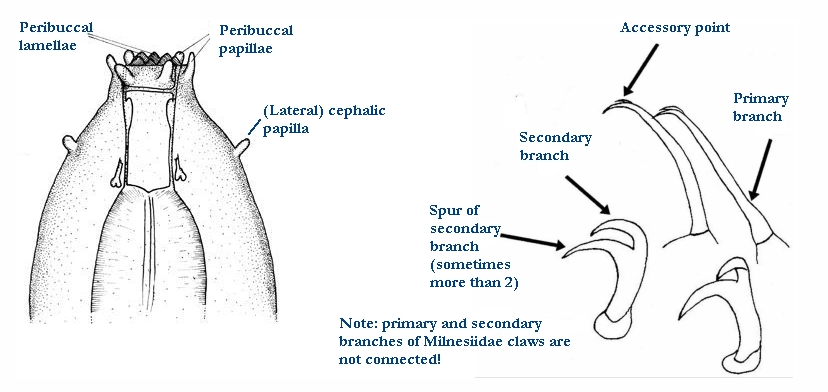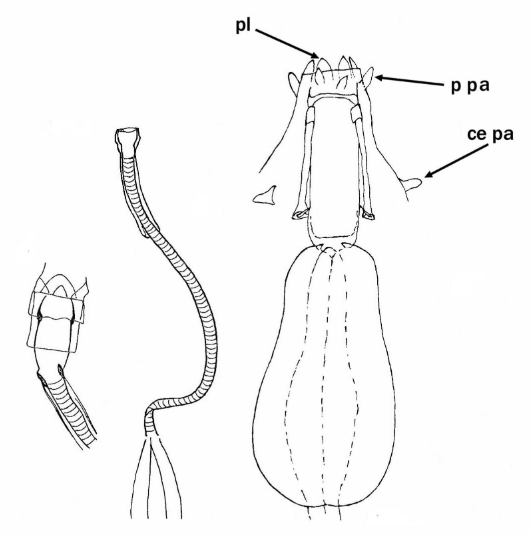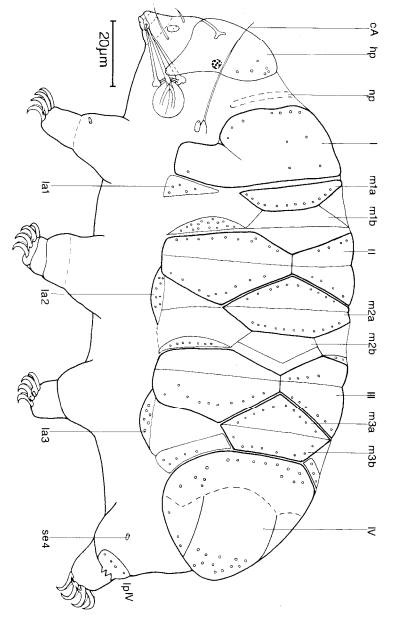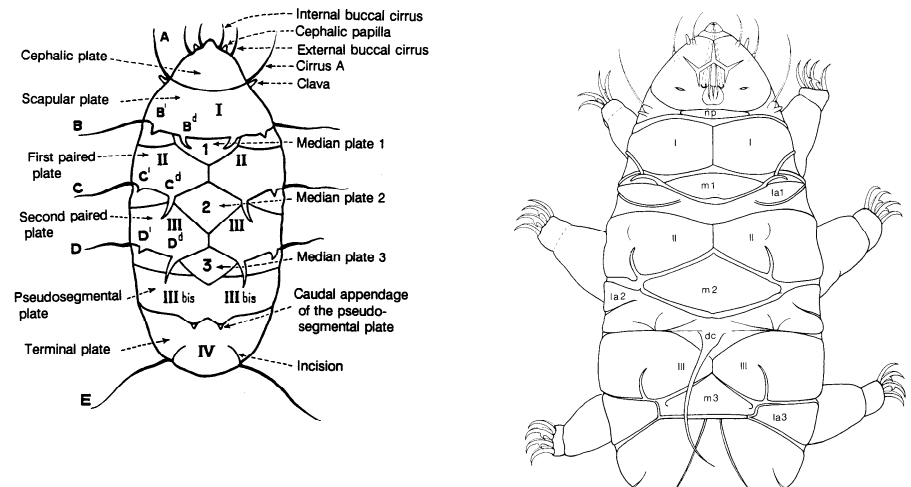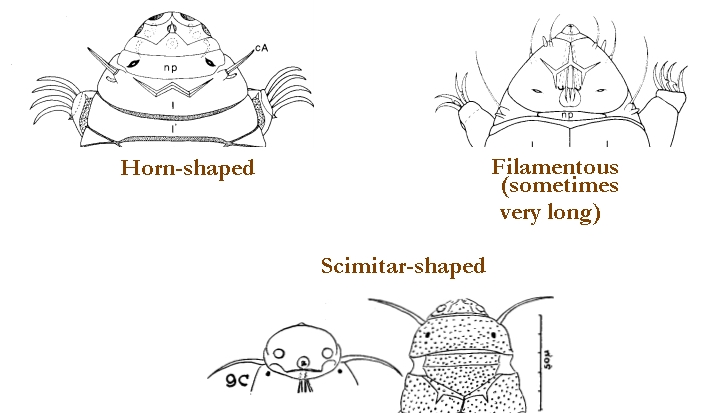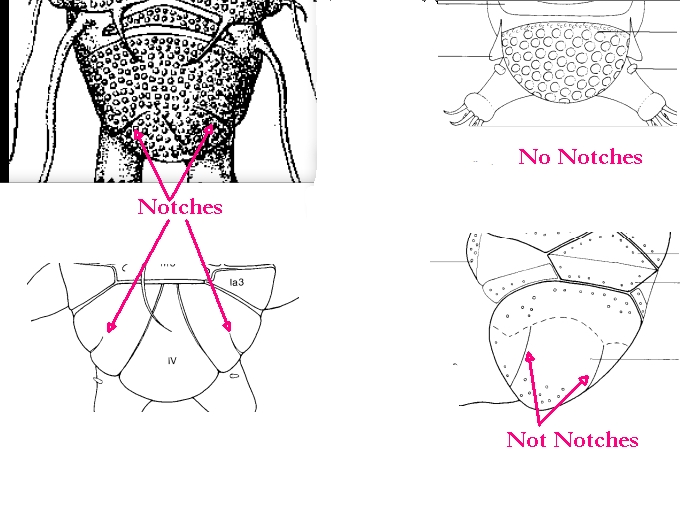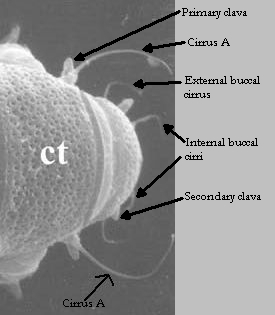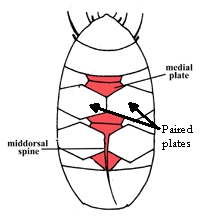From Kristensen 1987: “Echiniscidae with flexible buccal tube, pharyngeal bulb with a drop- shaped structure located on the placoids. Eyes possibly black, but nearly disappeared during the preparation. All four segmental plates I-IV unpaired with two bar-shaped median plates 1 and a distinct bar-shaped median plate 2; primary and secondary clavae with ring shaped annulus at the base; internal cirri with a large swollen base. Claws on leg IV with secondary spurs on both internal and external claws. Description: Small, distinct head plate with a circular depression or pore. This structure is connected with suture in the anterior part of the plate. Neck plate is indistinct and has a thin cuticle. The scapular plate (I) is large with lateral projection on each side; these projections overlap the anterior element in the median plate 1. The single segmental plate II has the same lateral projections at the posterior margin of the plate. The single segmental plate III is curved slightly laterally at the anterior margin. The caudal plate (IV) is weakly incised at the posterior margin; the incision is not associated with cirri E, which arises at the lateral margin of the caudal plate. The granulation of the segmental plates consists of a double sculpture: coarse-irregular elevations and finely punctuation (pillars in the cuticle). The intersegmental plates are bar-shaped and with only fine granulation. The first element (m 1a) in the median plate 1 is relatively short, the second element (m 1b) continues laterally and is longer than the segmental plate. The median plate 2 has the same length as that of segmental plates II and III. A depression of thin cuticle is situated between median plates 2 and segmental plate III. The long cirri A have finely punctuated cirrophores and, the primary clavae insert via a cuticular ring (annulus) near the cirrophores of cirrus A. The tear-drop-shaped secondary clavae have the same annulus. The internal cirri are located dorsally; the base of each cirrus is distinct gibbosity; the external cirri are located ventrally and lack swollen bases. The sense organs on leg I are small and papillate, the sense organs on leg IV are ovoid, each with an annulus at the base and a small pore at the tip. A smooth leg plate is located only on leg IV. The claws are robust, the internal claws on all legs each have basal spurs directed downwards. The external claws of leg IV each have a large spur directed upwards. The buccal apparatus is unique for a heterotardigrade. The placoids consist of the normal bar-like structures, but posteriorly each placoid has a tear-drop-shaped cuticular thickening similar to the macroplacoid in eutardigrades. The buccal tube is rigid until the insertion of the stylet supports, thereafter the tube is flexible. The stylets are shorter than the buccal tube, each stylet has a cuticular formation, like a cuff. This structure is found in the marine genus Echiniscoides, too (Kristensen & Hallas, 1980). The furca of the stylet is relatively small.”
Flexible pt, drop-shaped structure located on the placoids. All plates unpaired. Claws on IV have secondary spurs on internal & external.
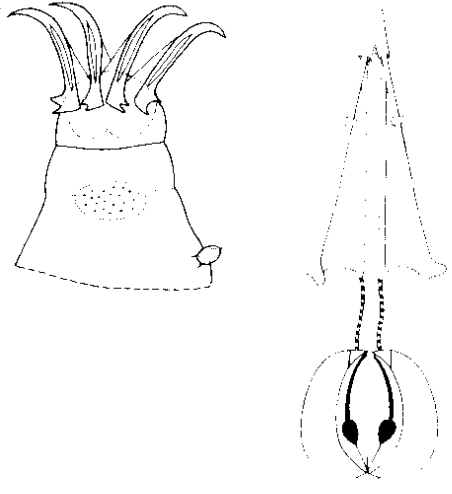
Citations:
Kristensen RM. 1987. Generic revision of the Echiniscidae (Heterotardigrada), with a discussion of the origin of the family. pp. 261-335 in Bertolani R (ed). Biology of Tardigrades: Selected symposia and monographs.





